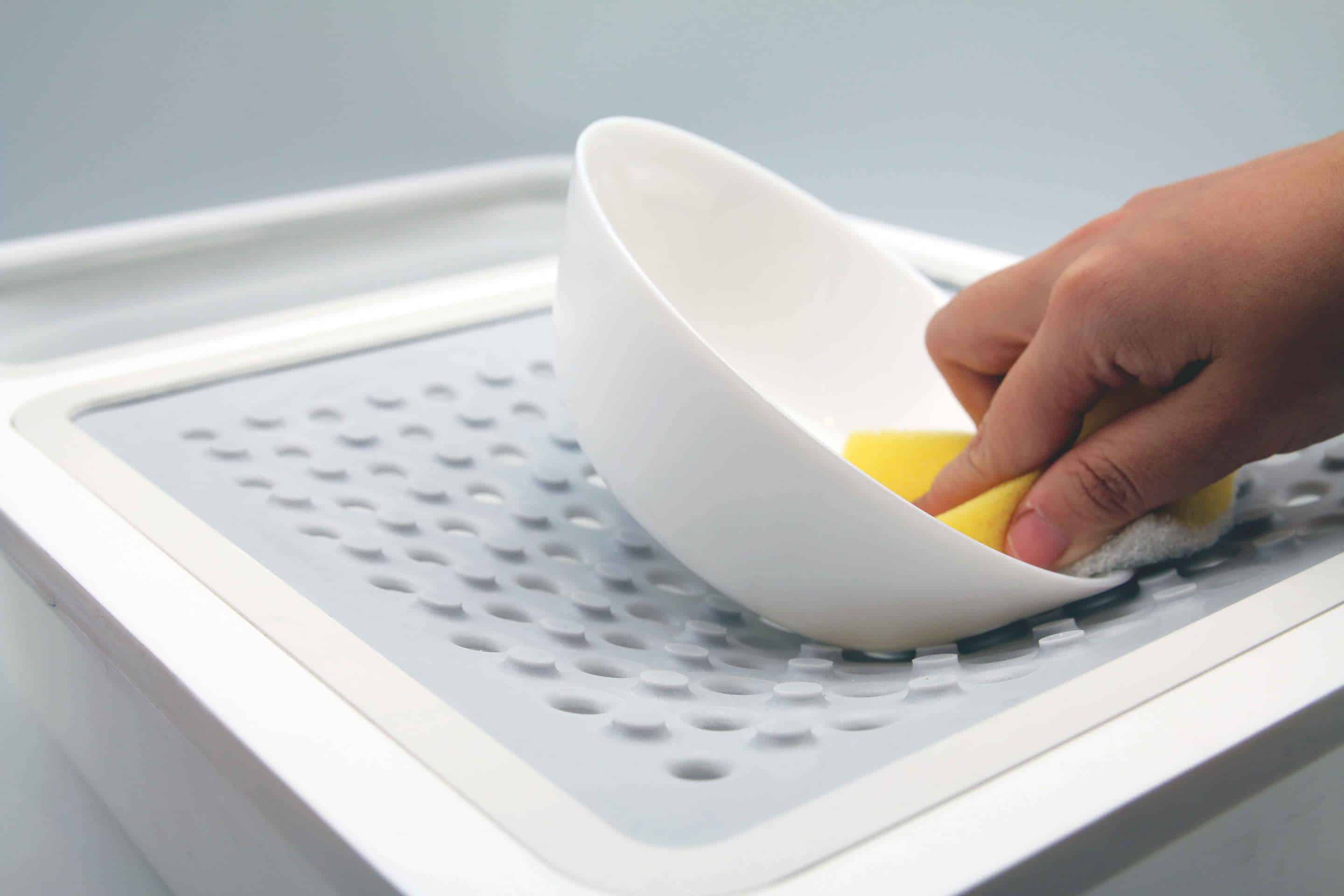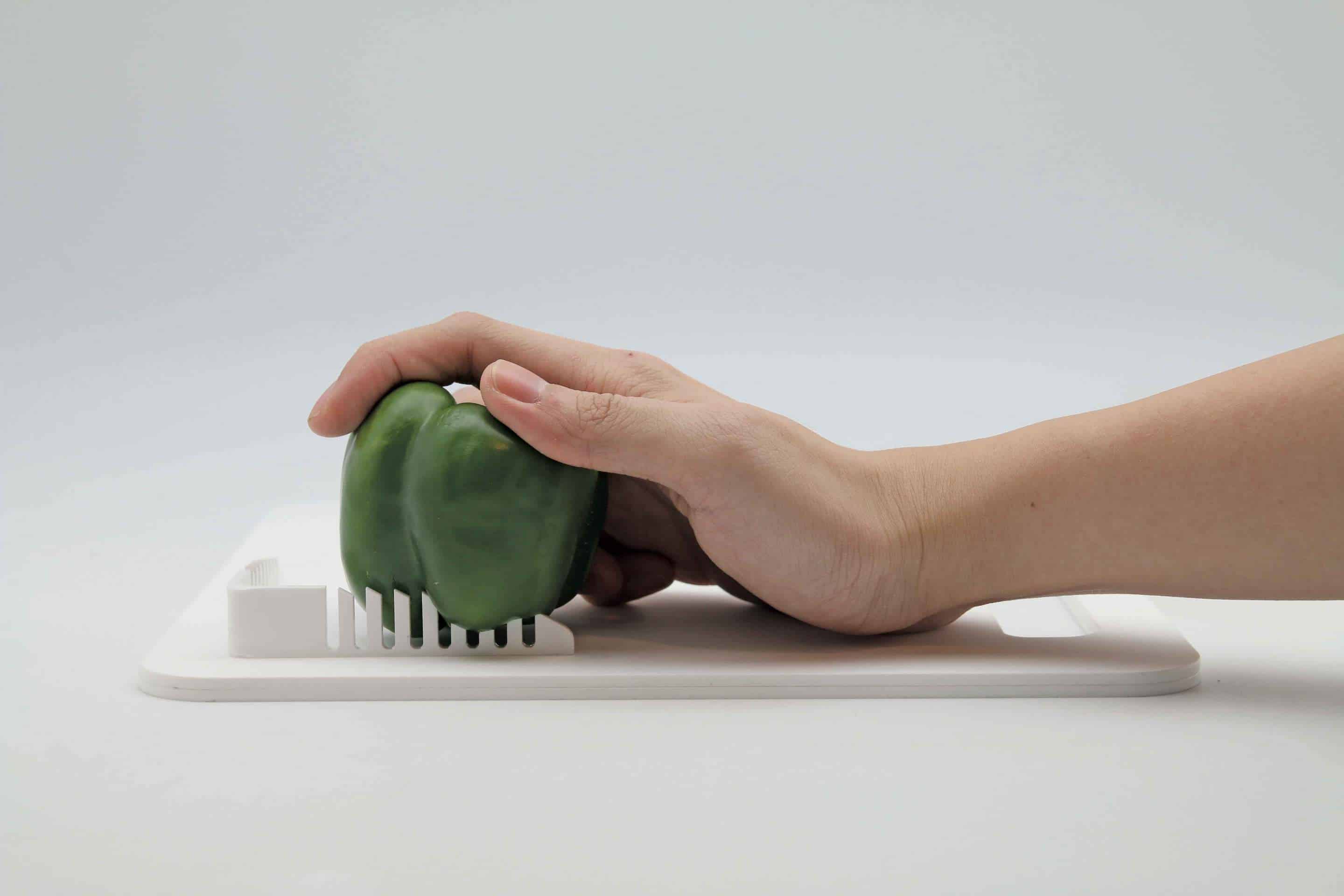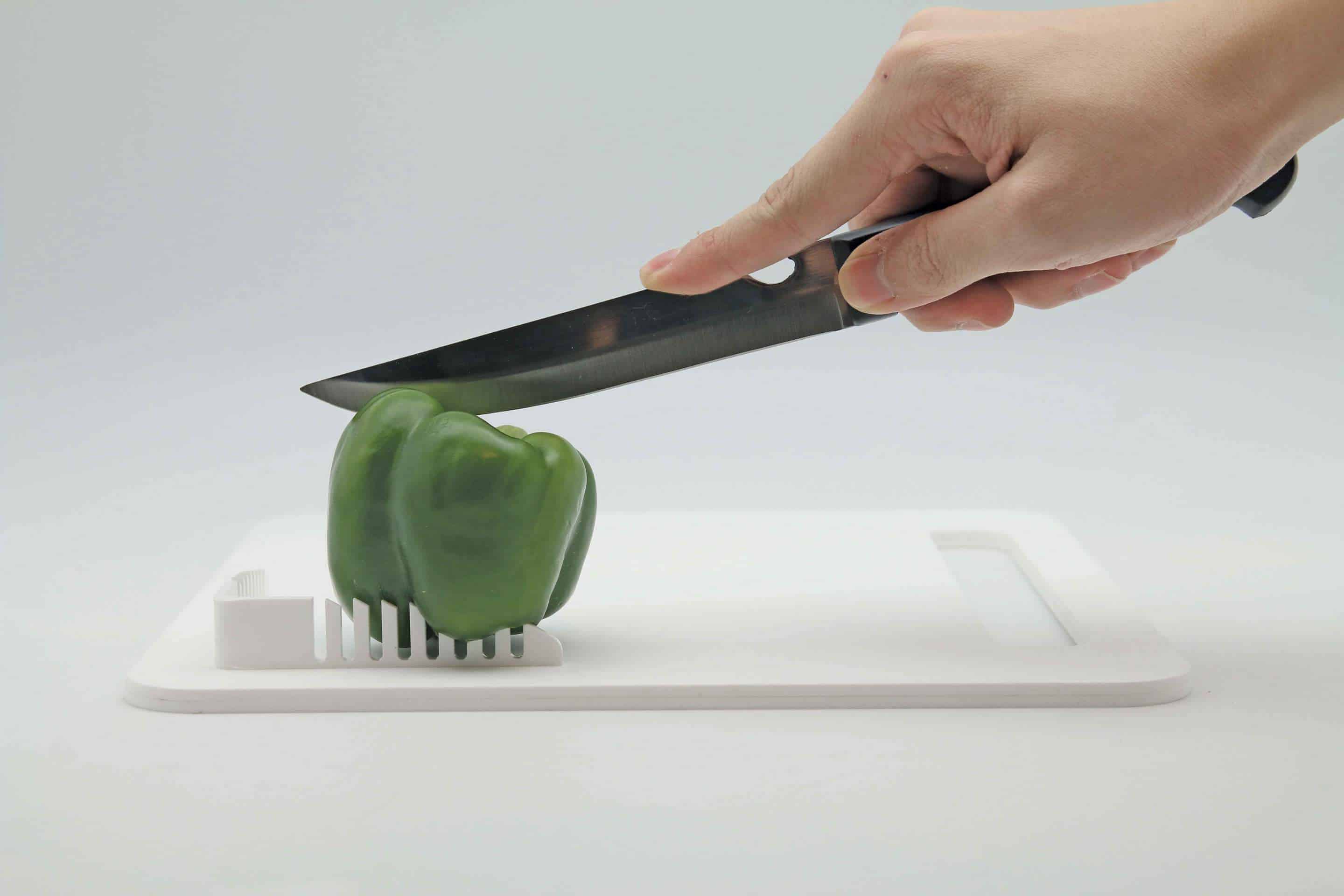Oneware
Oneware is a sink necessity that is designed specifically for those who only have one functioning arm. These people are often faced with issues interacting with daily objects especially dealing with household chores. Oneware is a series of modular units that aids them in various kitchen processes from food preparation to dish washing.


When it comes to design for the disability, many would think of designing products that are related to the medical field. However, most of the time, the main challenges faced by them are usually performing daily task such as household chores. More in-depth research was done prior to better understand the challenges of the target users through organisations that include Disabled People’s Association (DPA). Being able to link up with users from different background that includes amputees, people born with one arm, patients suffering from stroke and temporary hand injuries help to gain more insights of their lifestyle.
Existing assistive products tend to be intrusive and thus leaving a strong social stigma for the users. Oneware aims to break through this by designing to suit the users and context, taking into consideration of functionality and aesthetic. The project also aims to achieve a low learning curve of the product, and not affecting the way of usage while they perform the task. Inspired by user behavior, Oneware is a set of sink necessities that focus more on the workflow and micro-movement to assist in their kitchen activities.


This project went through the process of ethnography research that includes interview and observation of real users, concept generation and prototyping, several iterations of testing and evaluation, and lastly optimizing the design for manufacturing.
Ethnography Research
Prior understanding of their lifestyle through various media, literature reviews and books are done to understand their aspirations and problem. Research through role-playing helps to understand their perspective and relate better when they are sharing their insights.
Concept Generation and Prototyping
Experimentation of silicone and getting the right tension and flexibility is one of the main challenges, various grade, thickness, pattern, and sizes have been tested before finalising on the design. Another key consideration would be to be able to design to suit the manufacturing process in order to cut down the cost, making it affordable in the end.
Testing and Evaluation
Testing and evaluation of the products are done bi-weekly by meeting up with the users to gain their feedback. The products are placed with them for a week to use and feedback session to find out the areas that require improvement after a long-term usage, in order to develop the product further.

Most people are able to understand the purpose and usage easily without any form of guidance on how to use the product. The thing that I learnt the most is that the users play an important role throughout the whole design process as ultimately they are the ones using it.
Although many felt that design for disability is considered as a niche market, it actually opens up to more possibilities and new innovation that could cater for the mass. At present, this product aims to be launch in small scale production. Eventually, I hope that it could help those in need and create awareness that disability inspired design in many aspects as well.
thank you for this work, as a stroke victim, i can only use one arm and am encumbered by a wheelchair. im interested in obtaining some of your products. could you contact me? thank you, martha